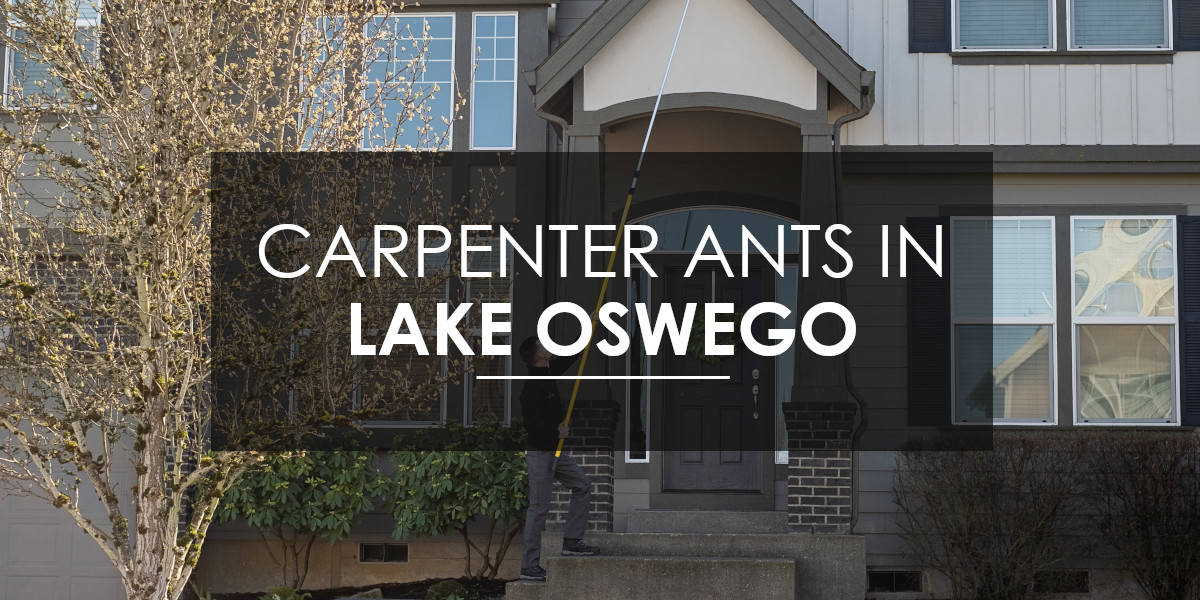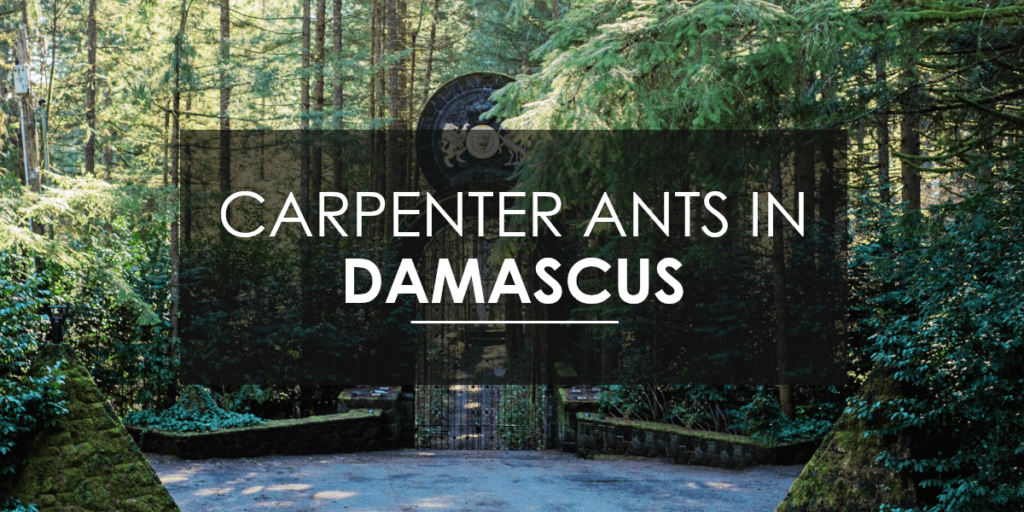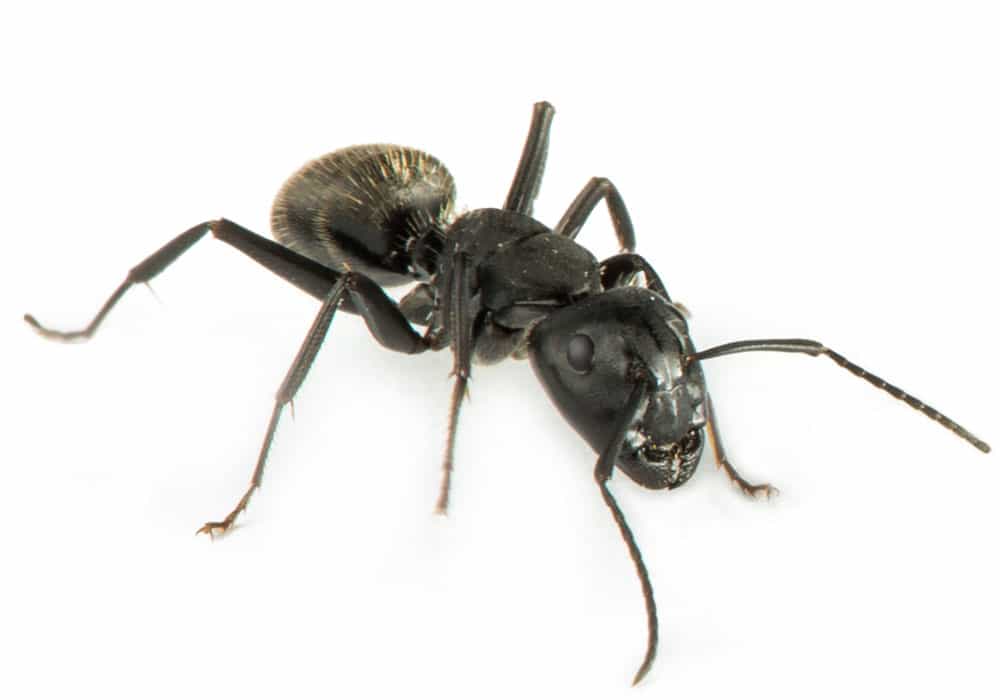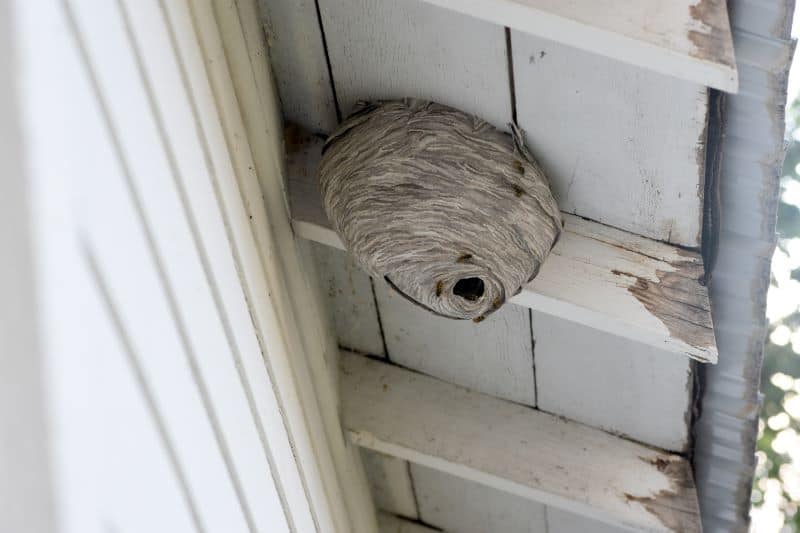TL;DR
- Carpenter ants are common in the Pacific Northwest, with reddish-black ants around 1/4 to 1/2 inch long, and some may have wings.
- They are often mistaken for termites, but don’t eat wood; they burrow into decayed wood to create nests called galleries.
- Carpenter ants feed on proteins like smaller insects and honeydew, and in homes, they seek sugar, fat, and protein.
- Carpenter ants prefer moist, decaying wood, and often enter homes through cracks, broken seals, or areas with wood rot.
- While carpenter ants can cause damage to wood over time, severe structural harm is unlikely without a long-term infestation.
- Professional pest control is recommended for thorough extermination and to prevent further issues with carpenter ants.
What do you really know about carpenter ants?
It may surprise you, but carpenter ants are one of the most common pests in all of the Pacific Northwest. Of the many species of ants that can be found all over the world — as many as 30,000, according to our trusted friends at Washington State University — you’ll be sure to find a wide range of differing shapes, sizes, and other characteristics, like what they prefer to eat or where they prefer to nest.
Their prevalence as an invasive creature means that ant infestations are one of the most common pest problems people encounter, and one of the most common extermination challenges that pest control experts face.
Since every variety of ant is unique, pest control experts have different methods for extermination at the ready, depending on what the most effective method might be for the type of ant problem you’re facing. If you have an ant problem, we recommend right off the bat making sure that your professional support team understands the nuances of what they are dealing with. We feel it’s our responsibility to educate our clients about pests so that they can feel confident their investment in pest control is a valuable and effective one.
So, what exactly are carpenter ants? And what aren’t they?
Most commonly, the carpenter ants you’ll see in the Lake Oswego area have a reddish black appearance. Though their size will vary slightly depending on their role in the colony, their average length is about a quarter to a half-inch, though it is notable that the worker ants are larger in size than other ants that can be found in the nest. Queens, of course, are the largest of all ants that can be found in the colony, but they will be much less visible than workers or males.
Some carpenter ants have wings, and many do not. Note that not all winged ants are carpenter ants. The carpenter ants that do have wings are known as swarmers or alates. If you see these ants, then there’s a good chance you’re dealing with a big infestation, as they are reproductive ants who are looking to further expand the colony.
Though the name “carpenter ant” is hardly an unusual one, one thing that we’ve found in working with clients over the years is that they tend to confuse carpenter ants with termites. It’s an honest mistake, but we’re here to help you understand that these are entirely different creatures with altogether different motivations. We’re more than happy to explore those differences, all while helping you get the information and support you need to live a pest-free life. Just know that termites are actually pretty rare to see in the area and more often than not, most “termite” issues actually turn out to be carpenter ants.
Carpenter ants, like many creatures in the insect kingdom, live in social colonies. These colonies are composed of queen ants, worker ants, and male ants, and can sometimes house as many as two thousand worker ants alone!
In terms of their specific responsibilities, queens mate with males, lay eggs, and grow the colony. They also use pheromones, which are essentially biological signals, in order to direct workers and indicate to males they are ready to mate, among other important messages. Worker carpenter ants are females, and it is their job to gather food, develop nesting areas, build elaborate tunnel systems, and more. Male carpenter ants live to mate with the queen, dying shortly after fulfilling their duty.
Recognizing the Signs of Ant Infestation
Identifying the signs of ant infestation early is crucial for effective control. Common indicators include:
- Visible Ant Trails: Ants forming visible paths along walls, floors, or countertops.
- Sawdust Piles: Small piles of wood shavings near wooden structures, indicating carpenter ant activity.
- Rustling Noises: Hollow sounds emanating from walls, especially at night, due to ants tunneling through wood.
- Discarded Wings: Presence of wings near windowsills or baseboards, suggesting a mature colony.
- Ant Sightings: Occasional sightings of large black or reddish-black ants indoors.
If you observe any of these signs, it’s advisable to consult a pest control professional to assess the situation and recommend appropriate measures.
Carpenter ants — where do they live and what do they eat?
We’re guessing this is no surprise, but carpenter ants prefer wood for nesting. Their favorite? Decayed, soft, moist wood is best for a carpenter ant nest. The areas inside those pieces of rotting wood where the nests are established are referred to as “galleries.”
Now, you might be surprised to learn this: carpenter ants don’t eat wood. Sure, they burrow through it, but they do not eat it. The sawdust they leave in their wake is called “frass,” and you will commonly see it outside of the wood where they’re nesting.
Carpenter ant queens are territorial, so it is common for these large colonies to be composed of many smaller colonies, all of which are connected together by an elaborate series of tunnels, leading from one gallery to another. You’ll have the dominant queen overseeing the main colony, with other subdominant queens, males, and workers managing the smaller colonies. Some small colonies will consist only of workers.
So, if carpenter ants don’t eat wood, what do they eat? Well, carpenter ants are big into proteins, feasting on smaller insects, dead or alive. They also love a sweet aphid secretion, called honeydew. But these are their dietary preferences in nature and outside of the home. If they make their way inside, it’s an altogether different story.
What about the carpenter ants inside your Lake Oswego home? Well, they’re going to look for sugar, fat, and protein — as much of it as they can find. But how did they get in there in the first place?
How did carpenter ants get into my Lake Oswego home?
Odds are, if you have carpenter ants inside your home, it’s probably not the main colony. It’s more common for a satellite colony to establish itself in the home. But that doesn’t explain how they got in. As we mentioned earlier, carpenter ants like moist, decaying wood. Could parts of your home have wood rot? With the Pacific Northwest being such a moist climate, it’s more likely than you might expect.
Once they’re drawn to the home, they can make their way in through cracks in brickwork, broken window or door seals, or where utilities enter the home. Now, we know what you’re thinking, “Can carpenter ants destroy my house? Can they harm my family?” The answer is, on both counts, probably not.
Sure, there is damage that can be caused by their tunnelling into the wood of your home, but this would point to an already existing issue — like wood rot — that they’re taking advantage of. Any structural damage would require a long unchecked infestation, which, while not impossible, is highly unusual. However, they can be as destructive as termites if a severe infestation is left untreated for a long period of time, so it’s best to be on top of the issue before it becomes a huge cause for concern.
Similarly, physical harm is unusual. There have been reported cases of allergic reactions to carpenter ant bites, and should you or a loved one experience any symptoms, we recommend seeking medical attention right away. But the likelihood of getting bitten is very, very rare. Carpenter ants are generally not aggressive creatures.
How can I exterminate carpenter ants?
Our best recommendation? Call a professional! Aspen Pest Control is ready to be your first line of defense against carpenter ant infestations. Our team is local, licensed, insured, bonded, and ready to give you the most thorough and effective pest control experience possible.
Our team prides itself in going the extra mile to ensure that no stone is unturned, so that we can give you the most informed recommendations possible. We know you have a lot on your plate, and this is our way of making your life that much easier. We’ll worry about the ants, so you don’t have to. We can even provide you with an over-the-phone consultation if that fits into your lifestyle better than an in-person consultation.








